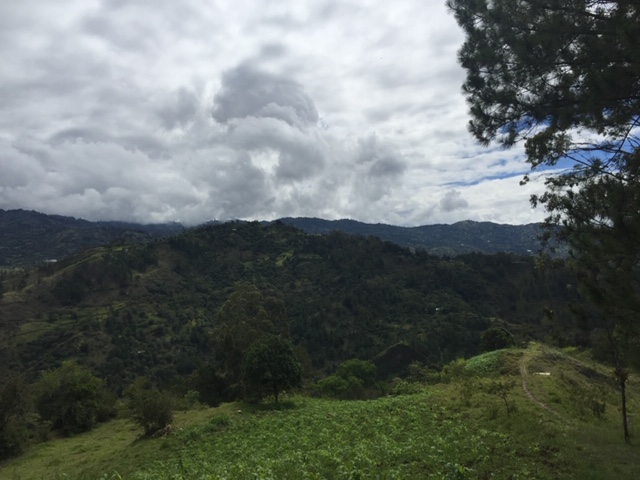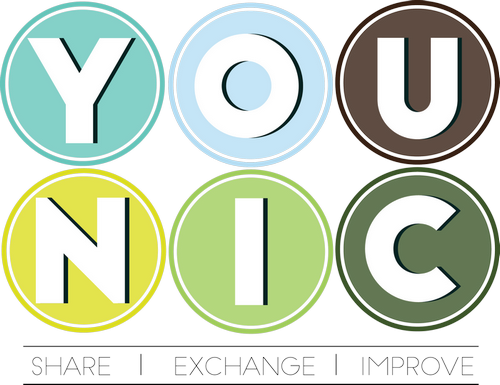
When Cemea del Mezzogiorno Ngo’ s staff contacted me for asking if I could participate in a JOB SHADOWING’ s project I felt honored. I immediatly read the infopack and I quickly realized the potential of YOUNIC Project: it’s an international cooperation project included in the strategic activities of Erasmus +, presented by Mundus (spanish NGO, located in Barcelona), which in the first step allows the mobility of european young people from Spain , Romania and Italy through European Voluntary Service projects in Mexico (Chiapas) and Colombia (Boyacà). In a second step it will be realized mobility of young Colombians and Mexicans in Europe. Younic’s target is to create a connexion between different countries from Europe ans South and Central America and allowing an exchange of skills acquired during the voluntary’s period abroad. In the final phase of all of the projects in 2018 there will be a conference where the goals will be evaluated.
The first impression I had about Boyaca Region, was at the Colombian Embassy when I asked for Visa. Among the people who worked there, no one knew where it was, and I was very surprised. I immediately realized that Boyaca is not the most touristic and famous regions of Colombia. And it’s a shame, because leaving us behind the chaotic Bogota for reach Valle de Tenza (200 Km from the capital) we immediately find ourselves immersed in postcard landscapes. We are in the car with Mario Barreto, responsible of GAL, Grupo de Acción Local (first actor involved in all of the projects in Boyaca) who, during the trip, offers us an Arrepa, cornflaked stuffed with cheese or chicken. Although the infrastructures are not so modern, what we see is fascinating in the eyes of a European person: little waterfalls, rivers, mountains with exceptional views, small villages with colonial houses and churches, and above all we are struck by the richness of flora and fauna.
Before arriving at Guayata and staying in the hotel, we stopped in a small village to taste a good colombian coffee and visit a small colonial church. After we have a lunch with Mario’s family and we taste the incredible variety of exotic fruits in this region (lullo, maracuja, pitaya). After a day of rest due to the jet lag, we immediately get to work. This is the first partnership between Mundus, Cemea and Gal, so the goals are so many in a matter of days: to visit all the venues to which the 5 volunteers of the project are going to stay, to know the actors of the local NGOs and to have an idea about the type of activity in which will be included volunteers; it’s also an opportunity to give some suggestions and advice on the volunteer integration process. We also need to visit the volunteer’s homes and check all the logistical aspects (housing conditions, distance from the workplace and the contracted meals for catering).
Our first visit is in Santa Maria, such fascinating place. We arrived in the afternoon and fresh and clean air envelops us. We head straight to venue of DESCUBRIR NGO, founder of the GAL. We attend and wait for the end of meeting with beneficiaries of the project on microcredit for the financing of small business ventures. Next, local actors presente us all of the ongoing projects developed by DESCUBRIR. Local actors of this NGO are: Karen Aguirre, a local artisan involved in microcredit fund management; Liliana Gonzales, environmental engineer responsible for environmental projects and in particular ecotourism, and Nelly Perilla, high school teacher responsible for pilot projects presented by high school of Santa Maria. Also high school students participated in the meeting and split into groups presenting their projects. These are projects related to the environment, the rediscovery of the territory and the exploitation of the land. Some students propose a journey in a bird watching trail and practice orieentiring. Others are working on a project to let the inhabitants of Santa Maria know the cultural and material heritage. And then it’s our turn: we present ourselves as representatives of the sending NGO, respectively Mundus and Cemea.
We are very surprised to see in the face of these young people a strong interest in the themes related to cultural identity and the connexion with their territory. At the end of the meeting we visit the family who will host one of the volunteers to check all the logistical aspects. Then we go to dinner together and in a more casual atmosphere we know each other better and talk about our personal stories. The day after we head to Somondojo, not far from Santa Maria, but Mario keeps a small stop near a waterfall. Let’s take some photos and eat a baked arrepa in a small wood-burning oven by some street vendors. When we arrived in Somondojo, we know Maira, a young girl from the Youth Council and Noemi, the legal representative of the artisans of the town hall. They welcome us in a handcraft shop a Maira describes her project and her activities, emphasizing how active youth participation is crucial to their development. Maira would like to create a cineforum, a park with recycled materials and replicate it in other municipalities and finally renovate the library of the town hall. At the head of these projects there should be an online platform managed by her and other local volunteers. Maira’s proposals are still very abstract, and activities are still in the incubator. However, she is very determined, like most young people in this country.
Next visit is in Garagoa: we’re involved in a istitutional meeting with CORPOCHIVOR and local official photographers. CORPOCHIVOR is the most importan strategic partner for GAL and it’s located in Garagoa, city of 150 thousand inhabitants. It has an action planning for period 2016-2019. The activities carried out are a lot: water ecotourism projects, prevention programs in high-risk areas, environmental education projects, and creation of a local farming book. The involvement of young people in these projects alongside environmental professionals is the main objective of Corpochivor; in fact, more than one hundred young people are involved in the activities carried out. The meeting ends with the offer of some gifts: books and virtual encyclopedias on the biodiversity of the Boyacà region. Last visit (last but not list) is in the venue of GAL in Guayata, where Mario and Jeiner welcome us. Jeiner is a colombian guy 32 years old, and he present us ARRAIGO, his pilot project. This is a newborn project with only one year of life, which has given much visibility to the GAL. Despite the embryonic duration, the project already seems to be very rooted in the territory. Jeiner is a young Colombian boy from Bogota who has done his studies and work’s experiences between Europe and Central America and then he came back to his homeland for give the added value of his skills to his land.
ARRAIGO is born from the idea of developing rural youth entrepreneurship and is currently being realized in two Guayata high schools. Jeiner has decided to implement a pedagogical production process in schools, following the methodology of popular education. The most important goal is certainly to promote coffee, the prince of this land and unfortunately it is almost entirely exported in others countries. SECOND WEEK Here we come to the second phase of stay in Colombia: welcome volunteers, facilitate the inclusion process and provide them with initial training on the host country and NGO. Volunteers arrive in Guayata the evening of June 21th . On the following day I accompany them to the Fonzaque Café, Guayata’s flagship and a must-have for those who like to have a great coffee. Benjamin is the owner and he is a model for the GAL and for young people involved in the non-profit activities of Valle de Tenza. Benjamin, in fact, produces coffee himself and in his coffee shop offers a wide range of coffee drinks with a unique and intense flavor. On the second day with the volunteers we eat with Enrique, Mario and Jeiner. It’s an opportunity for them to try all the traditional foods and drinks of the region, which will accompany their six-month journey.
The next day, Mario organizes a visit to an important coffee’s industry in the area and give us the oppotunity to reach it through a very impressive ecotouristic trail. Once we arrive at the coffee factory, we take part in the tasting process, always with Benjamin’s mediation, and together with Mario, we make a round of coffee plantations and then we go to a room upstairs where Jeiner and a local volunteer prepare some games to let local volunteers know about local culture. They present them traditional foods, fruits in the first place, songs, dances and games related to tradition. After lunch and a bit of deserved relaxation for volunteers, we go to the GAL’s venue to begin the training session on the general part (Evs, Younic, fears and expectations during voluntary period). Enrique initially set up ice breakers to allow volunteers to get to know each other better and then ask to volunteers to drop down reflections about staying in Colombia for six months and answer these two questions: “What can I do? “ and then “What can I receive?”
On June 24th , Mario organizes an informal lunch with all the local partners involved;it is a great opportunity for volunteers to get in touch with the locals with whom they will work during their EVS. After a special lunch strictly based on traditional dishes, we gather at a time of reflection on this new adventure/project of partnership between European countries and Colombia. All ends with a group photos and volunteer offerings,to me and Enrique of gifts: each of us, in fact, receives a handmade bag from this region. We are in the final phase and the volunteers have to reach their venues; Enrique offers an EVS training and provides an overview of what this training experience and personal growth is for volunteers: we all actively participate in the discussion and summarize that this experience it means: interculturality, opportunity, learning, enrichment, exchange, network, sense of intiative. Enrique also briefly explains to volunteers what is the Youthpass and how they have to consider it.
The last part of the training before the departure is a time of introspective recollection with a musical background, in which we reasone together about what this experience means for volunteers; It’s a very intimate moment in which volunteers discuss about expectations and fears about staying in Colombia. And so this path turns to the end: the volunteers are ready to go to their homes and they are full of enthusiasm in embarking on this adventure in the name of cooperation in such a fascinating place.
Paola Emiliozzi
